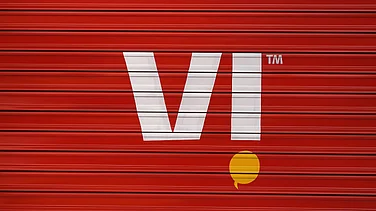Ola, the Indian ride-hailing start-up that was expected to mount a challenge to industry giant Uber in the global marketplace, is wrapping up its operations in Australia, New Zealand and the United Kingdom—the three countries it had expanded to outside India. The company made the announcement on April 8. Its formal operations in Australia ended April 12.
“We have reassessed our priorities,” an Ola spokesperson told Entrackr, a Gurugram-based media website, explaining why the company decided to shut down its overseas businesses “in its current form”. “The future of mobility is electric—not just in personal mobility but also for the ride-hailing business, and there is immense opportunity for expansion in India,” an Ola statement said.
Ola’s Ride Down Under
Ola entered Australia and New Zealand in 2018, eight years after it was founded, marking the company’s first foray into overseas markets. At the time, Ola's co-founder and chief executive officer (CEO) Bhavish Aggarwal said the company wanted to focus on driver-partners and “contribute to a healthy mobility ecosystem in Australia”.
By August 2019, Ola claimed that it was present in Australia’s most populous cities and was planning to expand into non-metro areas. “We are now present across 8 cities in Australia and are the fastest-growing major rideshare player in the country,” Simon Smith, the company’s erstwhile managing director for Australia and New Zealand had said at the time.
By 2020, Ola had become the second-largest player in the ridesharing space in Australia after Uber, a report by Australian market research firm Roy Morgan stated. Even as the company was seeing growth, its house was in a mess. Three top executives working with Ola in Australia and New Zealand had quit the company, Moneycontrol reported in October 2019 citing sources.
Add to that, the pandemic severely affected the company in the Australia and New Zealand markets. “It was hit badly during the pandemic and never recovered since then,” Economic Times quoted a former senior executive saying. The Australian Financial Review said Ola did not make a profit in Australia.
Failed Foray in the UK
Ola’s foray in the United Kingdom made a big splash, with one news outlet calling it ‘Uber’s new nightmare’ in London. But merely two years after launch, Ola ran into trouble with authorities for its operating model. Helen Chapman, Transport for London’s director of licensing, regulation and charging, told CNBC that the agency had found flaws in the rideshare company’s operating model that led to use of unlicensed drivers and vehicles.
Ola’s UK business never really took off, with the company being able to claim just around two per cent of the market. It remained a very small business with little revenue at GBP 4.8 million in losses in the 2023 fiscal, an Economic Times report said. “Bhavish Aggarwal is not happy with the company’s performance in the UK. Ola is bleeding in London,” Moneycontrol reported a company spokesperson saying.
In 2022, Ola’s electric vehicle manufacturing venture Ola Electric announced a global centre for advanced engineering and vehicle design in Coventry, UK. Whether the rideshare platform’s exit from the UK will have any impact on its centre is unclear.
Focus on India
The decision to exit Australia, New Zealand and the UK will save Ola a lot of money. One estimate pegs it at US$ 15 million annually. Ola posted a revenue of Rs 2,135 crore in the financial year 2023, an increase of 58 per cent from FY22. The company posted a standalone profit of Rs 250 crore in FY23. This was after it reported a loss of Rs 66 crore in FY22. On February 5 this year, United States-based asset manager Vanguard cut Ola’s valuation by 30 per cent, to under $2 billion. This was the third consecutive markdown of the company.
Ola’s current focus on electric mobility is to do with its intent to file for an initial public offering (IPO) for Ola Electric, the company’s electric vehicle arm. Ola Electric filed its Draft Red Herring Prospectus (DRHP) in September 2023. After electric two-wheelers, Ola now wants to come up with electric three-wheelers, a product they have decided to call ‘Raahi’. The three-wheelers will be sold to consumers directly. Ola also has plans to open its own gigafactory to make batteries for electric vehicles.
The rideshare company’s move away from ridesharing to manufacturing comes at a time when the company is facing intense competition in the domestic market. Two years ago, Ola reportedly had 59 per cent of the rideshare market with the remaining 41 per cent resting with Uber. But the introduction of new, localised rideshare platforms such as Rapido and Namma Yatri has eaten into the space that belonged to just two players.
Rapido and Namma Yatri are also experimenting with a zero-commission model, which means companies don’t charge their driver partners commissions on every ride but only charge a nominal logging in fee. The move has inspired Ola and Uber to also experiment with subscription models.
Ola is the second Indian company to exit overseas markets in recent times. In January this year, the popular food delivery platform Zomato exited nearly all foreign markets. Zomato had ventured into around 13 countries since March 2023, and exited 10 out of those 13 in the last one year.































